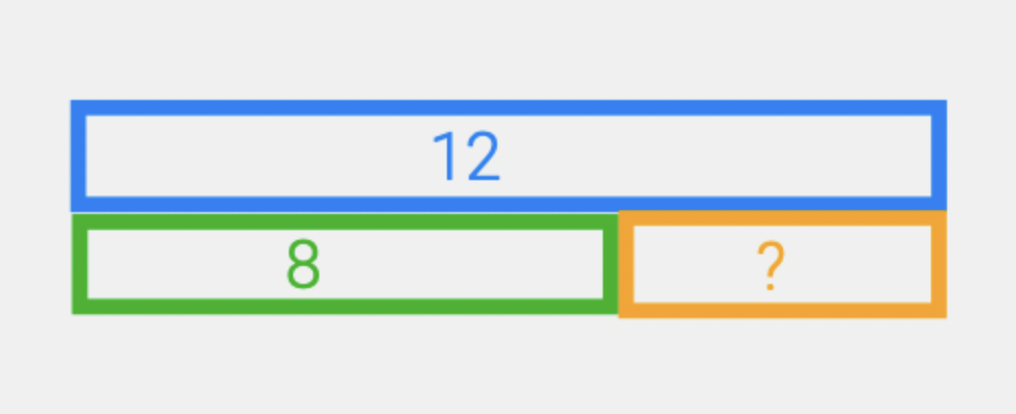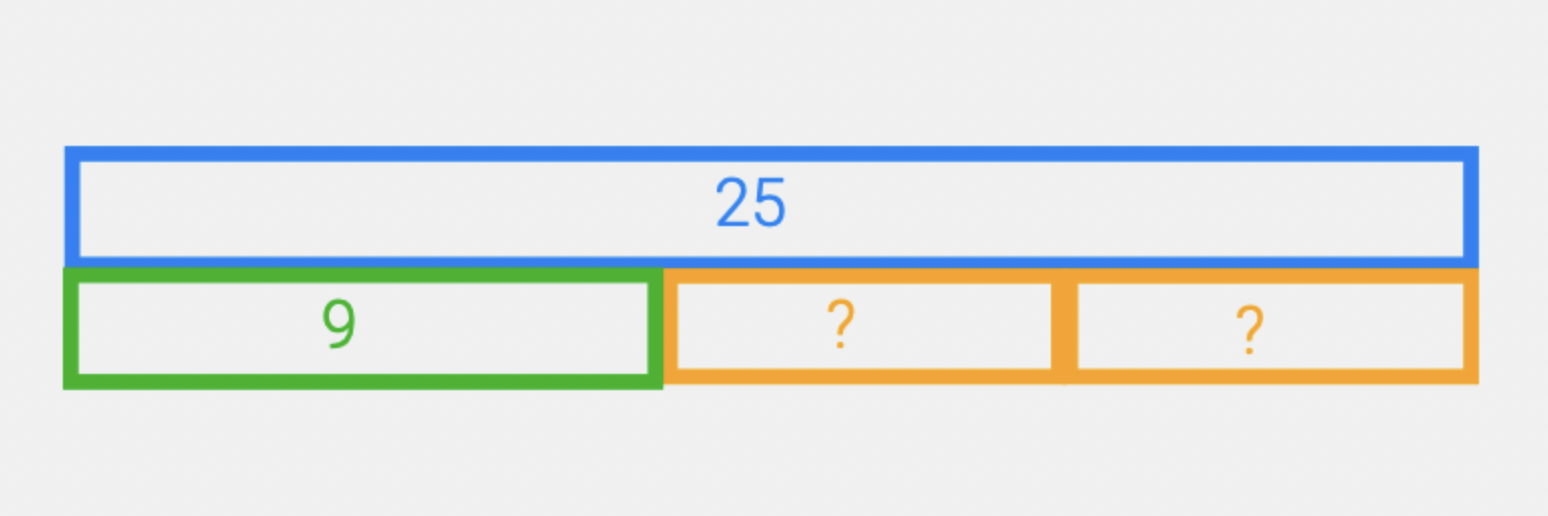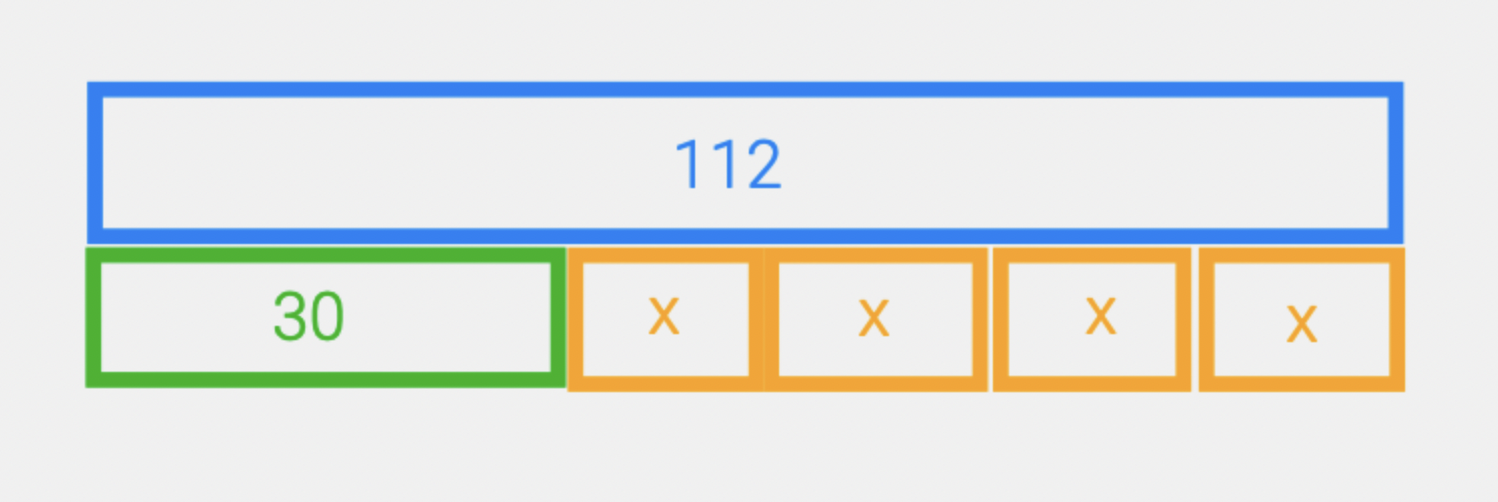Using Tape Diagrams for Math
Jan 11, 2023
Whenever a student is trying to make sense of a problem I like to ask, “Can you make a picture of it?” Using a tape diagram for math can help children model lots of different problems using different operations. They are useful from kindergarten all the way up to algebra.
Let’s see how they work.
Modeling Addition and Subtraction
Consider this problem involving a common situation.
Sophia has 12 friends coming to her birthday party. So far she has decorated 8 cupcakes. How many more does she need to decorate?

The tape diagram helps us to see the whole as well as the parts. We can think of it as 8+?=12 or 12-8=? Using this model we also see the relationship between addition and subtraction. (For a similar, yet slightly different, subtraction strategy, see this post.)
Modeling Division and Multiplication
We can also use the tape diagram to model division. If we count by 2s for the empty boxes will we get to 36? What if we count by 3s? Similarly, we could look at this problem and think of it as a multiplication problem 12x?=36.Sophia is making gift bags for her friends for her birthday party. She has 36 stickers to put into the gift bags. How many should she put in each bag so that each friend has the same amount?

Modeling a Problem With Many Steps
I love how the tape diagram can also keep track of the trajectory of a story. When a story has many steps it can be challenging for children to keep track of all the pieces. Capturing them in a tape diagram helps them to visualize all the parts.
Jake is on a three day camping trip with his family. Their goal is to hike 25 miles total. Yesterday they hiked 9 miles. If they want to hike the same amount today and tomorrow to reach their goal of 30 miles. How far will they need to hike each day?

Tape Diagrams and Algebra
While the tape diagrams are super helpful for early work with the operations, the work also provides such useful foundation for work in algebra. Consider this problem and see how it is similar to the one above but presented with x as the variable.
As the teacher was sorting out the unifix cubes she found she had 112. She wanted to keep 30 in her collection for demonstrating with students. The rest she wanted to put in baskets for each of the four tables in the classroom. How many should she put in each basket?

I often find when talking with children that is difficult for them to hold all the pieces of a problem in their mind and to make sense of how all the pieces fit together. Using a tape diagram for math makes it all visible. The tape diagram takes an abstract idea and makes it more concrete. We can now see each part of the problem and see how the pieces are related. It is now clear how to find a solution to the problem.How can you and your child use a tape diagram to model something in your day? You can make a sketch on paper or you can use the whiteboard app from the Math Learning Center to create your model.

